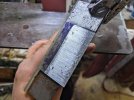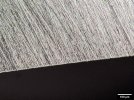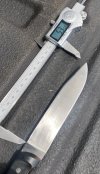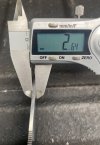So for modesty, imagine that you have a rocket of expectations aimed at the numbers on Larrin's chart. (We'll excuse shooting for the moon on super steel fantasies.) You see that cool new knife with "M390", "Elmax", or whatever awesome-sauce super steel printed on the blade. You go to use it, and I don't just mean on a weekend over a few Zima Ice. You use it over time, sharpening it at least a few times, maybe adjusting the angle, and hopefully enjoying a few real beers along the way.
So did that rocket ultimately hit the target of your expectations, based on whatever test, chart, or what someone said here? Did it hit higher than expected or did it come in lower than you had hoped? Did you get that super steel with a "meh" heat treatment that caused it to take a nose dive and land in the ballpark of lesser steels?
Obviously, steels with higher ratings have more room to fall and some occasionally do. Within the last few years, we've seen issues pop up with both production M390 and the flood of Chinese D2. Whether it's Super Steel Steve swearing up a storm, Outpost 76 carefully using his KME and running a 1" section through cardboard, or Pete doing his AUS-8 vs. D2 Rat challenge on rope; there is information besides my feelings at the recycling bin. The metallurgical question I was asking was about the ease of getting a good heat treatment on some steels versus others, or whether certain steels are more sensitive to issues in heat treatment than others.
Personally, the edge retention of 14C28N in budget knives tends to meet or exceed expectations relative to its ratings and similarly rated steels. Even in knives where they might be running it softer, it never seems to suck all that hard relative to its rating or general expectations. That's not to say it can't suck. Those are just my experiences and they seem to be mirrored in some of the kinds of testing I referencing.
Larrin could talk a bit more about this?





